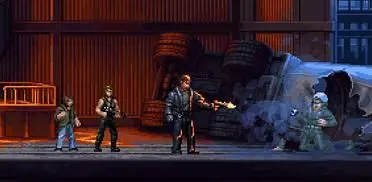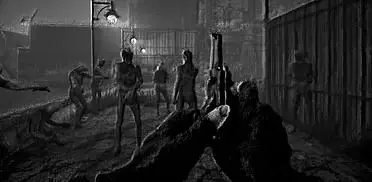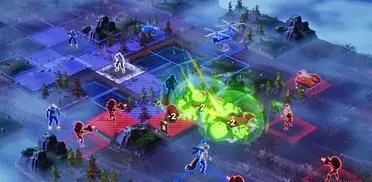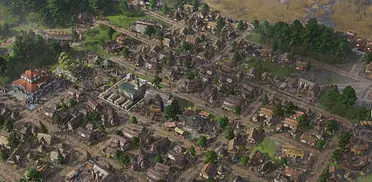Smite 2 is finally here as a closed alpha that will be running 24/7. Moreover, it’s been confirmed there won’t be a server/progress reset as it transitions into its beta and full F2P launch phases. This is all great news for anyone who’s been waiting for Hi-Rez Studios’ complete refresh of the highly successful MOBA game that launched more than a decade ago, but should you make the jump as soon as possible?
The short answer is no. But that doesn’t mean Smite 2’s closed alpha is disappointing. In fact, it’s been a pretty robust experience so far, and one that successfully brings back the feeling of Smite 1 before it became a bit too dense and scattered. Like the kids say nowadays: We might be back.
Back in January, Smite 2 was revealed to the world, and after several closed tests, it finally opened its servers to everyone willing to pay at least $30 to get in. It’ll remain a free-to-play MOBA game once it fully launches, but this ‘premium’ early access isn’t too different from what releases in the same space, such as Predecessor, have decided to move forward with. The main advantage of the model is that servers don’t get hit too hard too fast and that most players getting into the game during this period are more likely to engage with the developers and offer valuable feedback.
On top of the major tech upgrade – making the jump from UE3 to UE5 – and rebuilding controls and mechanics from the ground-up to better adapt to consoles and gamepad use on PC, Hi-Rez’s Titan Forge Games has also made a number of smaller tweaks while ensuring the transition from Smite 1 to 2 is as smooth as possible. This doesn’t mean your skins and other cosmetics are being transferred. The workload was simply too much of a problem, and Smite 2 is largely a clean restart for everyone (but you’ll be rewarded if you’re a Smite 1 veteran).
This might be the main reason why I don’t see much of a point yet in quickly moving from the original game to its more advanced heir, especially if you’re more a casual MOBA player not interested in figuring out the ins and outs of the game alongside developers. As it stands, Smite 2 feels good to play (perhaps even better than the original despite its current alpha state), but is a barebones offering that is missing several fan-favorite gods and game modes.
Again, this isn’t a knock on Titan Forge Games’ work on the ‘closed’ alpha. This is perhaps one of the best early access experiences I’ve had in quite a while, especially when it comes to MOBA titles – a genre I’ve been at odds with for a long time – but potential players should be aware of what they’re getting themselves into.
Ironically, veterans might be more interested in helping shape the Smite follow-up even if that means leaving a more enticing roster and tons of swag behind. Smite 2 is far from finished – many of the visuals are still half-baked, and basic UI bugs annoyed the hell out of me – yet it feels tight and clean, and if the community and Titan Forge manage to steer it in the right direction, a better, even more accessible iteration of Smite may be a thing come next year.
Right now, the two main modes are Conquest (the usual three-lane MOBA layout) and Arena (shorter, one-lane matches set in a literal arena), which feel like the right picks to figure out how the game’s systems and heroes/gods behave in long and short matches. One of Smite’s strongest points has always been how flexible and approachable it feels versus many of its genre peers, and the selection of modes always played a huge role in player retention.
As soon as you get into a match, the first marked improvement for players of all skill levels and types of experience is the option to auto-buy/upgrade, building towards some pre-set character archetypes. Of course, it’s all optional, and you can follow your designs once you’ve figured out each god’s skills and most of the items, but this ‘auto’ feature doesn’t even require selecting suggestions. Just choose your style at the beginning and focus on playing as well as you can. You can always tinker with it yourself in the middle of the match, but this is a killer addition even if you’re familiar with the first game.
The game as a whole also seems less visually cluttered; I must praise the (still in progress) UI work and how ‘readable’ the new graphics are despite its bugs. By and large, Smite 2 feels similar to its predecessor, and it might be a while before it fully develops a distinct look, but I’ve found my time with the game far less exhausting on the eyes than your average MOBA, and I hope the team doesn’t ‘overdo’ the visuals as they keep taking advantage of UE5’s capabilities.
On the matter of player movement, attacks, skills, and whatnot, it very much feels like the same game but perhaps a bit snappier, which I believe was one of the main goals behind the major upgrade. Classic gods like Anubis, Bacchus, or Athena feel just as you remember them but better, and new additions like Jing Wei and Mordred are bound to become favorites due to their uniqueness, though they’re a bit overtuned at the moment. It’s far too early to tell where things could be going next when it comes to balance and picking old favorites, but the current roster feels like a good mix of different roles and pantheons.
Another highlight, at least in my humble opinion, is the small additions and changes to the Conquest map, which is where most players will be spending their time. The new camps and neutral enemies waiting to be slaughtered are better marked and located, with clearer pathways between each lane, and the game’s audio doing a far better job of letting everyone know when something big is going down inside the jungles. Moreover, portals placed next to the left and right lanes let players quickly move between them without recalling to base or traversing the entire map. This means most of the early-game ganks don’t always rely on junglers and mid-laners.
In terms of performance on PC, I was sad to encounter the usual Unreal Engine-related stutters during my first couple of matches, as Smite 2 currently lacks shader pre-caching and new assets being used equal small stutters early on, no matter what your build is. Otherwise, I’d say this closed alpha runs well enough if you’re on a modern PC that handles other UE5 releases fine. Of course, it’s still lacking many optimisations, and what’s on display doesn’t justify the general wobbliness of the framerate (whether it’s low or high overall), but that’s to be expected from an early alpha.
In conclusion, Smite 2 has had a surprisingly strong and bumpless early access start, which is no small feat, especially when it comes to online games. The thing is that, right now, it’s not offering anything substantial that you can’t get in Smite 1 besides a couple of new gods and better controller support. Leaving years of achievements and cosmetics behind is a big ask, so chances are you want to wait a bit longer before moving into the future.
Smite 2 (early access) is now available on Steam, Epic Games, Xbox Series X/S, and PS5 through the purchase of one of the Founder’s Editions, which grants access to all current and future gods plus other benefits. The free-to-play launch is set for 2025.










